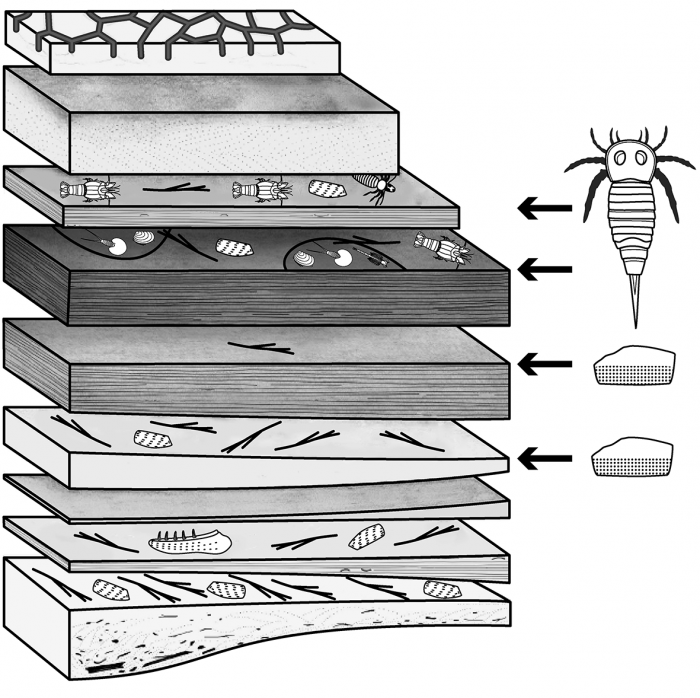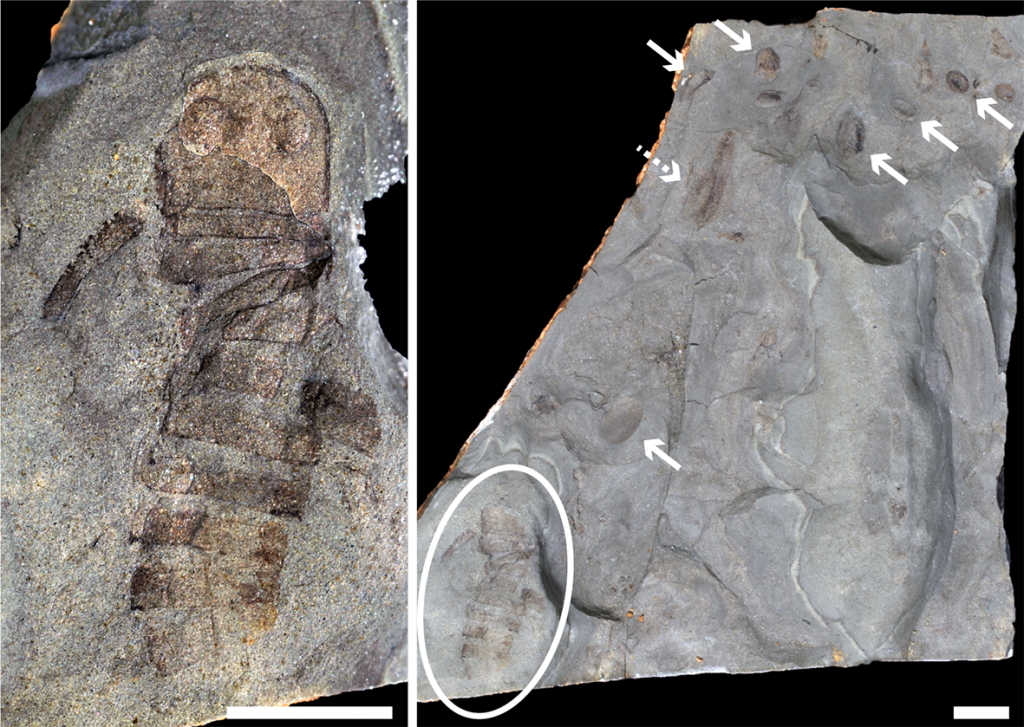Initiated in collaboration with Linda Lagebro (Uppsala University, Sweden) during our respective PhD projects, a paper describing eurypterids (‘sea scorpions’) from the Upper Devonian aquatic continental ecosystem of Strud, Belgium, is finally published this week in Geological Magazine.
The material consists of semi-articulated juvenile specimens assigned to Hardieopteridae recovered from pool and floodplain deposits, as well as larger isolated fragments likely of adult identity recovered from a higher energy fluvial environment. This apparent habitat partitioning reveals, as already suggested for some Carboniferous eurypterids, that juveniles have developed separate from adult populations in ‘nursery’ pools, which keep them safe from predators (fish) and give access to prey (small branchiopods and/or their eggs), before migrating to rivers during periods of flooding, or, though unlikely, by traversing land to reach adjacent rivers. The discovery of such a life habit among the Strud eurypterids is important as it indicates that this behavior may have been common among freshwater eurypterid groups, and highlights the complexity of the earliest continental biocenoses.
Juvenile eurypterid from the Late Devonian of Strud, Belgium, and associated branchiopod crustaceans in temporary pond deposits (notostracan, dotted arrow; spinicaudatans, solid arrows). Scale bars 5 mm.
Reference: Lamsdell J.C., Lagebro L., Edgecombe G.D., Budd G.E. & Gueriau P. 2019. Stylonurine eurypterids from the Strud locality (Upper Devonian, Belgium): new insights into the ecology of freshwater sea scorpions. Geological Magazine 156(10): 1708–1714. Find the article here

